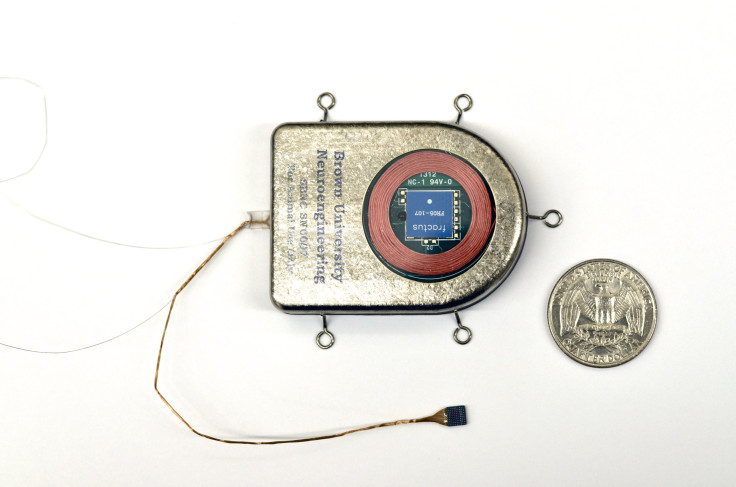Wireless Brain Implant Transmits Signals from Moving Animals: Is Human Telekinesis Far Off?

Brain implants may allow paralyzed people and amputees to use mind-controlled advanced prosthetics sooner than we think, with a very specific kind of "telekinesis" aided by a wireless brain-computer interface. The National Institutes of Health has announced that a compact sensor has successfully recorded and transmitted brain activity data wirelessly in an animal trial for over one year.
The brain implant is a huge step towards wireless devices that can control advanced prosthetics, and will allow much more natural studies of brain activity in moving research subjects.
The study, published in the April 2013 issue of the Journal of Neural Engineering, was led by Dr. David Borton and Dr. Ming Yin of Brown University.
Recent breakthroughs in brain-computer interfaces (BCIs) have allowed people with brain implant sensors to control robotic arms with their thoughts, but those devices have mostly relied on wired systems. Wired connections restrict movement and carry the risk of infection.
Borton and Yin's team built on previous research to overcome key barriers to a working wireless brain activity sensor. The brain implant had to be very small, completely sealed, and resistant to heating, in order to protect the surrounding living brain tissue. It also had to allow for wireless recharging, and needed to contain a computer powerful enough to translate the brain's nuanced electrical activity into coherent digital signals, then amplify those signals enough to send them to a wireless receiver outside the body.
They came up with a titanium sensor fitted with a sapphire window, packed densely with silicon-based microelectrodes and lithium-ion batteries designed to function continuously for seven hours between charges. Titanium is a biocompatible metal, and sapphire allows electromagnetic signals to pass through for wireless transmission and recharging.
Two pigs and two rhesus macaque monkeys were used as animal models for the titanium brain sensor. The researchers were able to receive and record data from the brain implants in real time, over a wireless broadband connection from more than three feet away. The sensors have been working safely for over a year in the freely moving animals, with no decline in data quality.
Until now, studies on animal neural activity have required bulky wired brain implants that limit the animals' movement. The ability to wirelessly record brain activity as an animal moves around naturally would be a major advancement for muscle control and movement research.
The researchers will continue testing the brain implant, and plan to further refine it for higher-quality data transmission and better heat management. Eventually, the sensor could have a broad array of uses in human medical care.
"Clinical applications may include thought-controlled prostheses for severely neurologically impaired patients, wireless access to motorized wheelchairs or other assistive technologies, and diagnostic monitoring such as in epilepsy, where patients currently are tethered to the bedside during assessment," said Borton in a statement.
It's easy to imagine a future where this brain sensor technology leads to non-medical applications for able-bodied transhumanists. Actual human telekinesis- the ability to move various physical objects simply by willing it- seems unlikely, since existing brain-computer interfaces require a two-way connection between the brain of an animal or person and a moving robotic device.
Still, recent developments like the creation of a "rat telepathy" brain-computer interface expand our notions of what it possible.
Just a few years ago, it would have been hard to believe that a paralyzed person could control a robot with her mind, like this brain-implanted woman:
Published by Medicaldaily.com



























